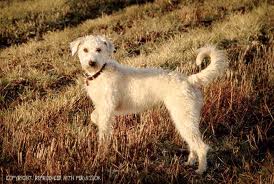WE ONLY CARRY THE FINEST TOP DOG K-9 LEATHER GEAR.At the new Canine Storewe will only sell high quality dog products. We pride ouselves in providing high quality products at an affordable price.
|
|
 |
|
Parvovirus
One of the most deadly viral diseases in dogs, especially puppies, is canine parvovirus, or parvo.
Parvo is highly contagious and is passed to other dogs through feces. It is resistant to temperature and weather changes (freezing actually protects the virus), so it can survive in the environment and on objects like shoes (or paws), grass, dog bedding and kennels, leashes, even people, for a long time.
Dogs are often exposed to it at dog parks or other places where dogs socialize. Unnoticeable, trace amounts of feces carrying the virus can be brought into your home by your dog, other pets, and people, as well as on your dog’s tennis ball or Frisbee. Your pup can become infected by chewing on, licking, or eating a contaminated object.
Only 20% of infected dogs develop the disease, but the consequences can be dire. If your pet has any of the following symptoms, contact your veterinarian right away: Vomiting, Severe bloody diarrhea, Depression or letharge, Loss of appetite.
Vomiting and diarrhea can quickly lead to dehydration, and puppies especially have a hard time surviving. According to the American Veterinary Medical Association, parvovirus deaths usually occur 48 to 72 hours after symptoms first appear.
Because parvo is so contagious and can be fatal, if your dog is infected, she will probably be hospitalized and will need to be isolated from other animals. Treatment focuses on controlling vomiting and diarrhea and administering intravenous fluids to keep the pet hydrated. Some dogs also need plasma or blood transfusions. The treatment can be very hard on the dog and there is no guarantee of success.
|
 |
|
Parvovirus is a serious, deadly threat to the unvaccinated dog population. It is so infectious that virtually anyone or any moving object can become a parvovirus carrier simply by coming in contact with an infected dog’s feces (bowel movement). The virus can survive searing heat and subzero temperatures for long periods of time, and so the virus might remain long after the feces has been removed. Shoes, paws, you name it, can pick up and carry the virus.

Don’t Panic, Vaccinate.
Occasionally, parvo jumps into the media spotlight, and pet owners panic. But if your pet is properly vaccinated, there is usually no need for worry.
The American Animal Hospital Association recommends that puppies receive three doses of the vaccine between 6 and 16 weeks of age. Your dog will need a booster one year later and then once every three years after that. Dogs older than 16 weeks should receive two doses of the vaccine three or four weeks apart. Most veterinarians recommend multiple parvovirus vaccinations for the growing puppy. Vaccinations establish protective immunity, which can reduce the risk of the disease.
Once vaccinated, your dog’s immunity is maintained through annual booster shots. If your dog is experiencing vomiting, severe diarrhea, depression, or loss of appetite, you should see your veterinarian as soon as possible. Specific drugs have not yet been perfected that will kill canine parvovirus, but proven treatments are available to control the complications of the disease.
To prevent the spreading of parvovirus:
Immunize your dog or puppy according to your veterinarian’s direction.
If you suspect that you have walked through an infected area, wipe off your shoes with one-part household bleach to 30 parts of water solution. Use the bleach/water solution as part of a general cleaning process of areas frequented by other dogs.

Things You Need to Know About Parvo.
Early vaccination and regular boosters are essential. Make sure a veterinarian performs the exam and vaccination. If you rely on a breeder or “papers” (which can be inaccurate), ask for verification that the work was performed by a veterinarian.
If you think you have come into contact with the virus, clean your shoes and, if possible, the area where there was fecal matter, with a mixture of bleach and water (˝ cup bleach to 1 gallon water).
If your puppy is lethargic, vomiting, eats less than normal, or stops eating altogether, call your veterinarian immediately. The earlier treatment is started, the better the outcome. However, treatment can be effective even if puppies have been sick for several days.
Don’t pay too much attention to Internet rumors about new strains of parvo or misinformation about prevention and treatment. Every two or three years, there seems to be a new wave of “parvo hysteria,” but it’s almost always inaccurate.
|
|
|